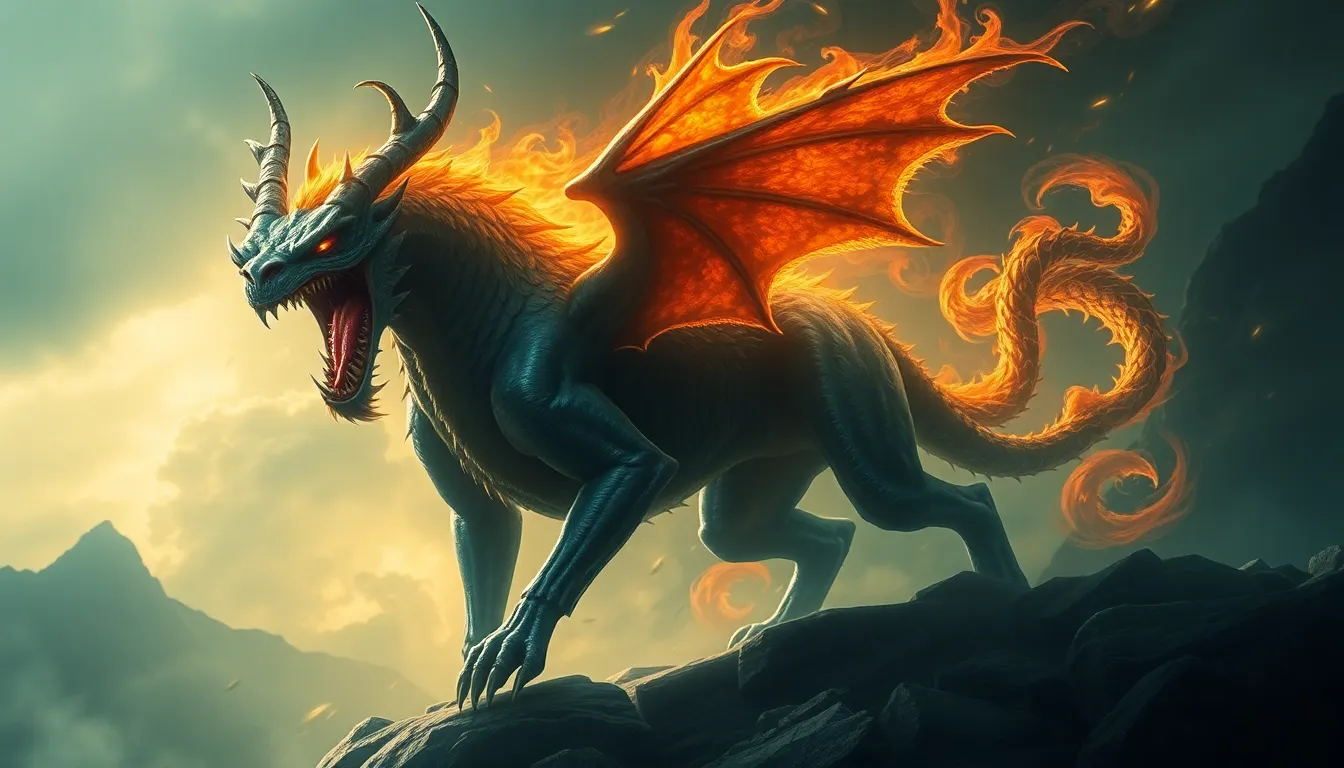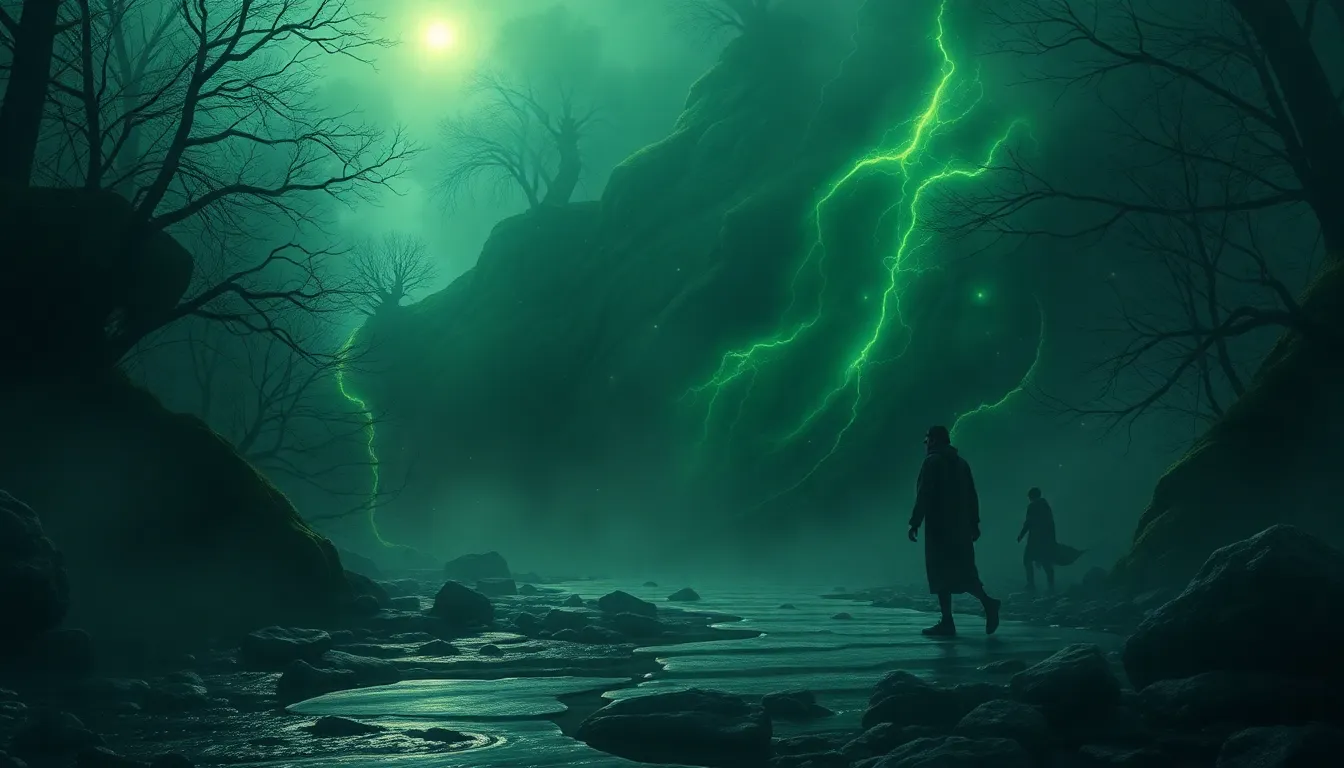The Myth of the Manticore: A Beast of Terror and Wonder
I. Introduction
The Manticore is a creature steeped in myth and legend, often depicted as a fearsome beast that evokes both terror and wonder. Traditionally described as having the body of a lion, the head of a human, and the tail of a scorpion, this creature has captured the imaginations of many throughout history. Its significance in mythology spans various cultures, often serving as a symbol of the unknown and the dangers lurking beyond the familiar.
This article aims to explore the origins of the Manticore myth, its evolution through time, and its enduring impact on literature, art, and popular culture.
II. Historical Origins of the Manticore
The Manticore’s roots can be traced back to ancient texts, with some of the earliest references appearing in Persian writings. The name “Manticore” is derived from the Persian word “mardkhora,” meaning “man-eater,” reflecting its fearsome nature.
Throughout history, the Manticore has been influenced by various cultures:
- Persian Influence: The Manticore was first described in Persian mythology as a creature of great terror that preyed on humans.
- Greek Interpretation: Greek historians like Herodotus documented the Manticore, introducing it to the Western world.
- Roman Adaptation: The Romans adopted the Manticore into their mythology, sometimes blending it with other mythical creatures.
Over time, the depiction of the Manticore evolved, incorporating elements from various cultures and adapting to the changing beliefs and fears of society.
III. Physical Description and Attributes
Traditionally, the Manticore is characterized by a unique and fearsome appearance:
- Lion’s Body: Symbolizing strength and majesty.
- Human Head: Often depicted with a cunning or feral expression, representing intelligence and malice.
- Scorpion Tail: This lethal appendage serves as a warning of the creature’s deadly nature.
Different cultures have provided variations in the descriptions of the Manticore. For instance, some depictions include wings, while others emphasize its speed and agility, enhancing its status as a formidable predator. The symbolism behind these monstrous features often reflects humanity’s deepest fears—of the unknown, of predation, and of the grotesque.
IV. The Manticore in Literature and Art
The Manticore has been represented in various forms of classical literature. Notable mentions include:
- Herodotus: The ancient Greek historian described the creature in his accounts of foreign lands.
- Pliny the Elder: In his “Natural History,” he provided one of the first systematic descriptions of the Manticore, contributing to its mythos.
Throughout the ages, artists have depicted the Manticore in various styles, from medieval bestiaries that illustrated it as a terrifying monster to Renaissance art that portrayed it with a sense of wonder. Its influence can even be seen in modern fantasy literature and pop culture, where the Manticore often serves as a formidable antagonist or a mysterious guardian.
V. The Manticore as a Symbol of Fear
The Manticore embodies various psychological interpretations of myth and terror. Its narrative carries a duality of fear and wonder:
- Terror: The fear of the unknown, represented by the Manticore’s grotesque form and lethal attributes.
- Wonder: The fascination with mythical creatures and the stories they inspire.
In ancient societies, the Manticore served to instill fear, often as a cautionary figure reminding people of the dangers that lurked beyond their communities and the natural world.
VI. The Manticore in Folklore and Oral Traditions
Across various cultures, the Manticore myth has taken on different forms:
- Variations: Different regions have their own interpretations of the Manticore, blending it with local lore and beliefs.
- Parallels: The Manticore shares similarities with other mythological creatures such as griffins and chimeras, which also combine elements of different animals.
- Cautionary Tales: Many stories featuring the Manticore serve as warnings against hubris or folly, reinforcing moral lessons.
VII. The Manticore in Modern Pop Culture
Today, the Manticore continues to appear in contemporary literature, films, and video games, often reimagined for modern audiences:
- Literature: Authors of fantasy novels frequently include Manticores as mythical beasts.
- Movies and TV: The creature has appeared in various adaptations of fantasy series, enhancing the sense of danger and adventure.
- Games: Video games featuring fantasy elements often include Manticores as enemies or significant figures.
The Manticore has also evolved into a metaphor for the complexities of human fears and desires, making it relevant in modern storytelling.
VIII. The Manticore in Cryptozoology and Pseudoscience
Some enthusiasts have speculated about the potential real-life inspirations behind the Manticore myth. Cryptozoologists have sought evidence of actual creatures that could have influenced the legend:
- Claims and Sightings: Various reports have surfaced claiming sightings of Manticore-like creatures, often dismissed as hoaxes.
- Myth vs. Reality: The line between myth and reality blurs as the Manticore serves as a reminder of humanity’s fascination with the unknown.
IX. Cultural Impact and Legacy
The legacy of the Manticore has significantly shaped fears and beliefs throughout history. Its influence extends beyond mythology:
- Shaping Fears: The Manticore has been a powerful symbol of fear, representing the dangers of the unknown.
- Influence on Heraldry: In some cultures, the Manticore has appeared on coats of arms and shields, symbolizing bravery and ferocity.
As a creature that straddles the line between terror and wonder, the Manticore continues to intrigue and inspire, ensuring its place in the mythological pantheon.




